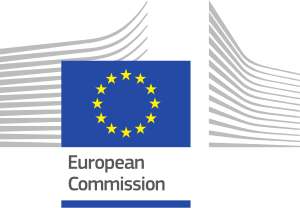In 2022 the EUnetHTA 21 Consortium worked together to produce a number of guidelines
which outline the methods that are used to undertake Joint Clinical Assessments of
technologies. Many of these guidelines are published on www.eunethta.eu and included
authorship from experts from across EU Member States (MS) (12 MS were involved in
EUnetHTA21 consortium) as well as consensus agreement from MSs. These guidelines will
be formally considered under the governance of the HTAR CG.
There are a number of claims made in the position paper: “Ensuring Joint Clinical
Assessment at EU level are fit-for-purpose for advanced therapy medicinal products” which
appear to misrepresent the methodological guidelines form EUnetHTA21 and contain some
core misunderstandings of the EU HTA process. The specific claim made under the headline
‘the proposed JCA methodology would have rejected nearly 90% of the ATMPs currently
authorised in the EU’ reflects a fundamental misunderstanding of both the JCA process and
of the methodological guidelines and the EU HTA Regulation.
In line with the HTA Regulation, the JCA will be a factual description of the relative effects
and an analysis of scientific uncertainty. The final valuation of benefit or lack thereof remains
the responsibility of the Member States. Therefore, the assertion that the JCA report would
reject or accept a technology is incorrect – the Regulation clearly specifies that such a
judgement cannot be made in a JCA.
The position paper makes multiple references to ‘no quantifiable benefit’ as a potential
conclusion of a JCA. We would like to highlight that this language is not used anywhere in
the EUnetHTA21 guidelines. Such a determination of benefit would not be possible in a JCA
for the reasons explained previously.
There is a further assertion that single armed evidence would be rejected outright in a JCA.
This is not stated anywhere or implied in the EUnetHTA21 methodological guidelines.
Regarding the lack of RCT evidence specifically, both the methodological and practical
guidelines on Direct and Indirect Comparisons (D4.3.1 and 4.3.2) discuss the methods for
estimating treatment effects from non-randomised evidence, such as comparisons informed
by single-armed studies together with external control arms (e.g. Real World Evidence). The
guidelines, in contrast to what is claimed in the Position paper, acknowledge that such
comparisons can be used to estimate treatment effectiveness, provided appropriate
methods and data are used. Guidance on the use of such methods is also given. Similarly,
the claim that “Programs with … the durability of benefit exceeding the length of the trial
would likely be assessed with ‘no quantifiable benefit’” is made in the position paper, even
though again this is not stated nor implied anywhere in the guidelines; indeed, it is
particularly difficult to comprehend how the authors of the position paper could have
inferred this from the guidelines. Many medicinal products, not just ATMPs, have a durability
of benefit that exceeds the length of the pivotal trial follow-up period, and treatment
benefits are routinely quantified on the basis of such evidence by HTA bodies and others.
Concerning other recommendations made in the position paper, we fully agree that the
HTAR CG, via their outputs, should clearly outline the sources of uncertainty to enable MS to
make informed decisions, as specified in the HTA R. How these uncertainties are addressed
is beyond the scope of the JCA but clearly outlining the uncertainties and relevant research
questions for decision makers will greatly aid a coordinated approach to robust evidence
generation.
In parallel with JCA activities, the HTA CG will carry out joint scientific consultations in order
to facilitate the generation of evidence that meets the likely evidence requirements of a
subsequent joint clinical assessment. In relation to ongoing evidence generation,
importantly JCAs are conducted within a specific timeline and are published 30 days after
the marketing authorisation is granted. Article 14 of the HTAR allows for updates where
recommended by the HTAR CG. Where national updates are conducted these would also be
shared with the members of the HTAR CG.
OUR NETWORK
CONTACT US

This website was produced under the Third EU Health Programme through a service contract with the European Health and Digital Executive Agency (HaDEA) acting under the mandate from the European Commission. The information and views set out in this website are those of the author(s) and do not necessarily reflect the official opinion of the Commission/Executive Agency. The Commission/Executive Agency do not guarantee the accuracy of the data included in this website. Neither the Commission/Executive Agency nor any person acting on the Commission’s/Executive Agency’s behalf may be held responsible for the use which may be made of the information contained therein.
©2021 EUnetHTA All rights reserved.
